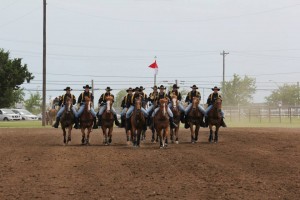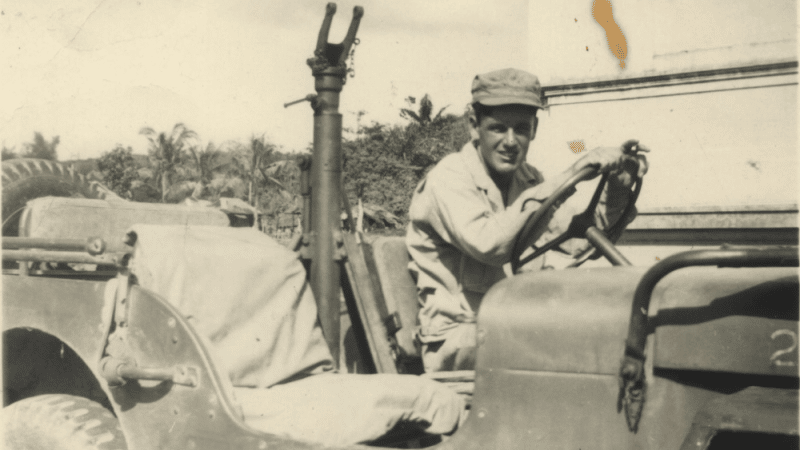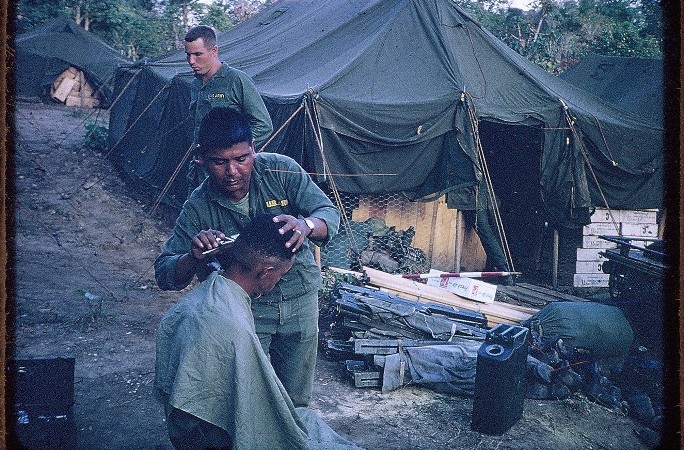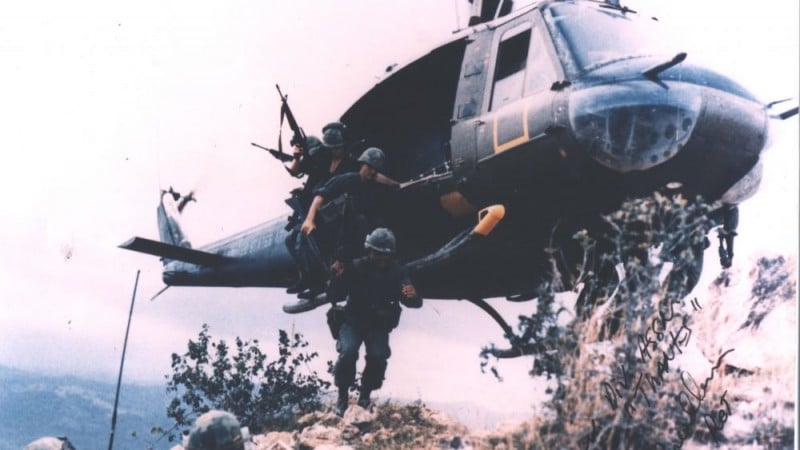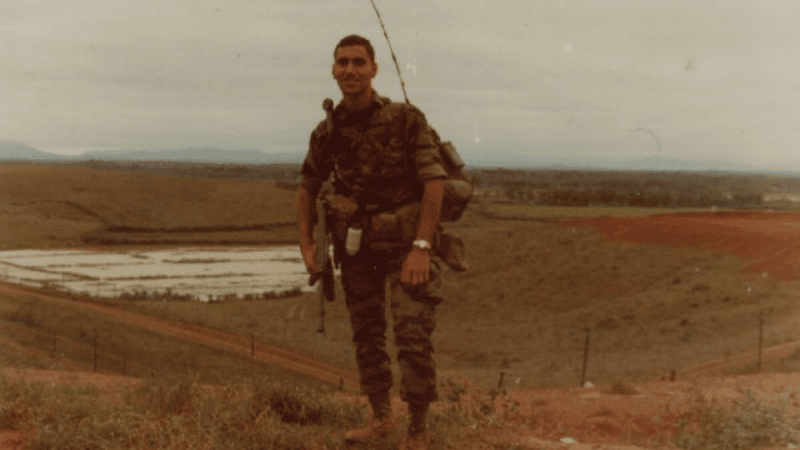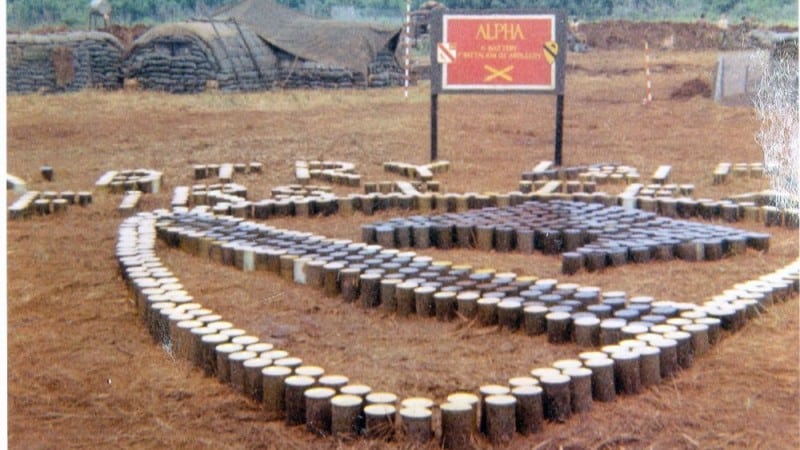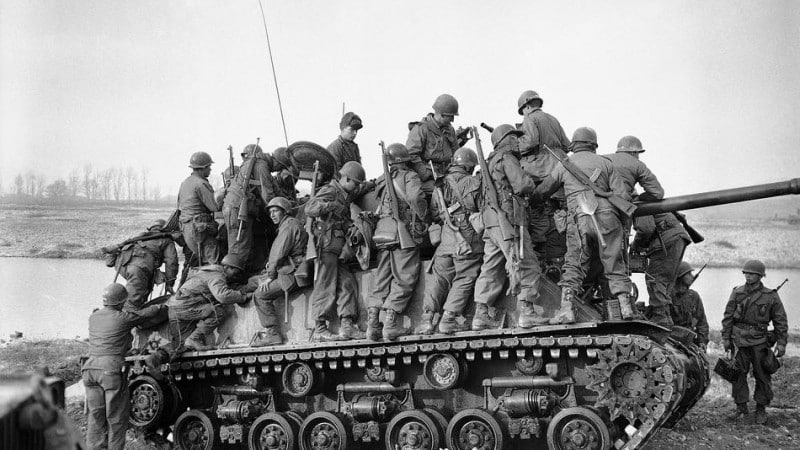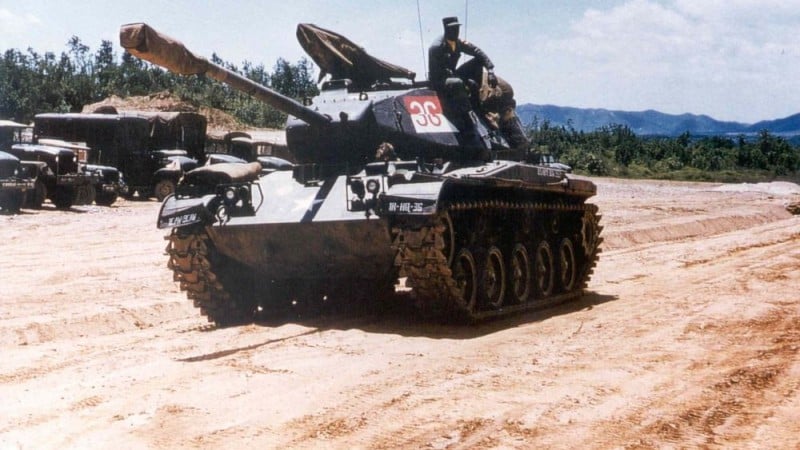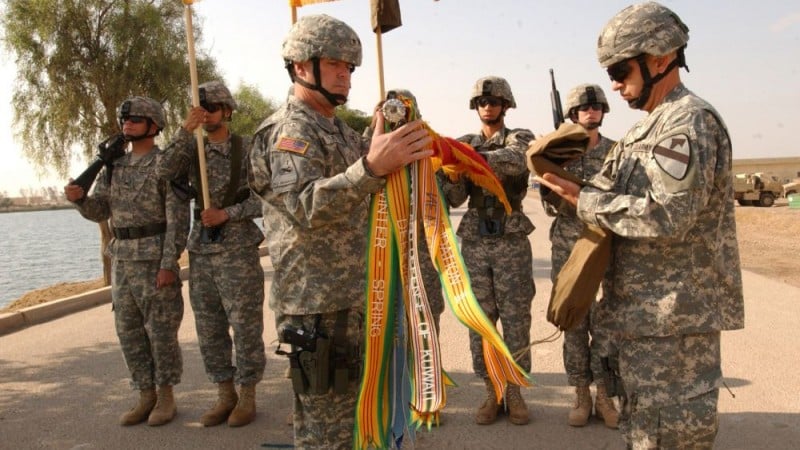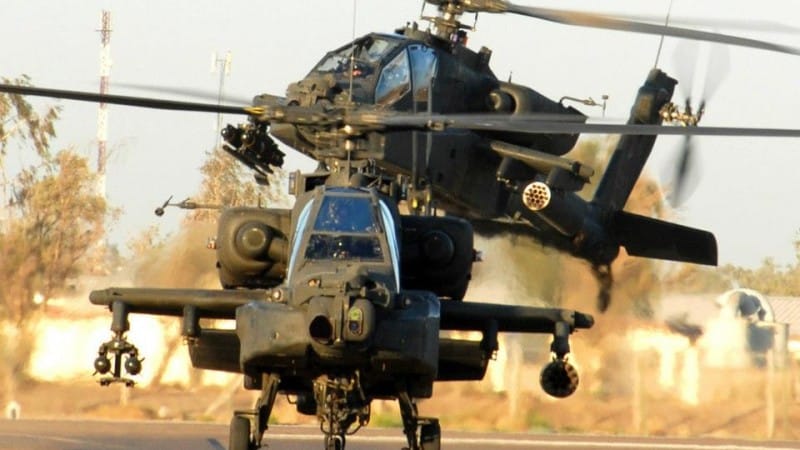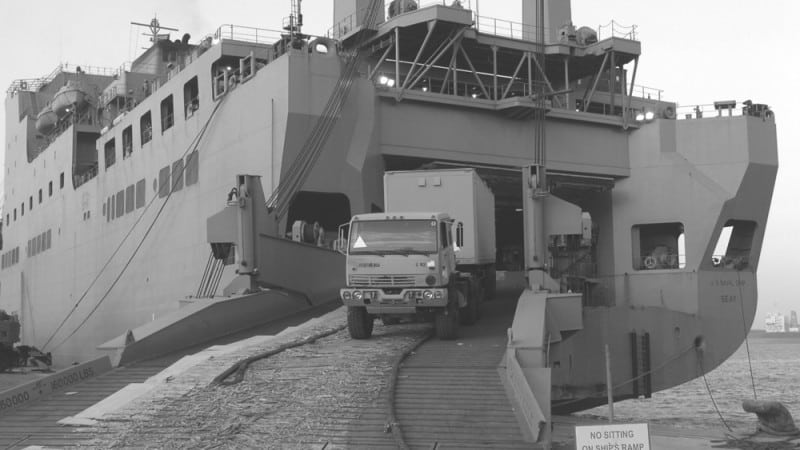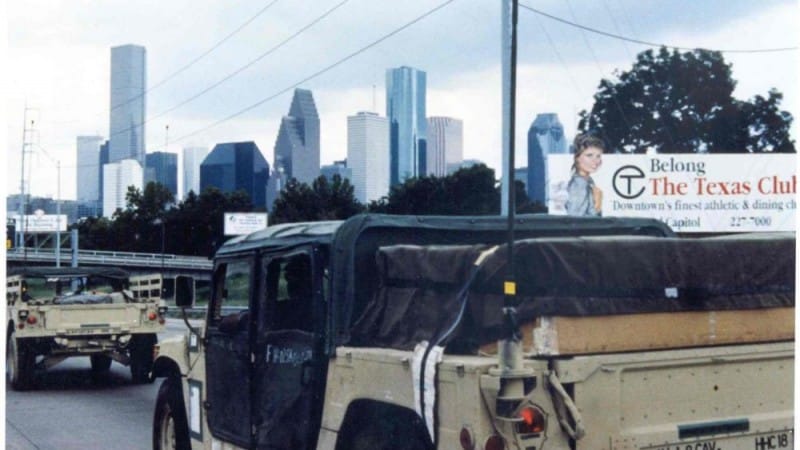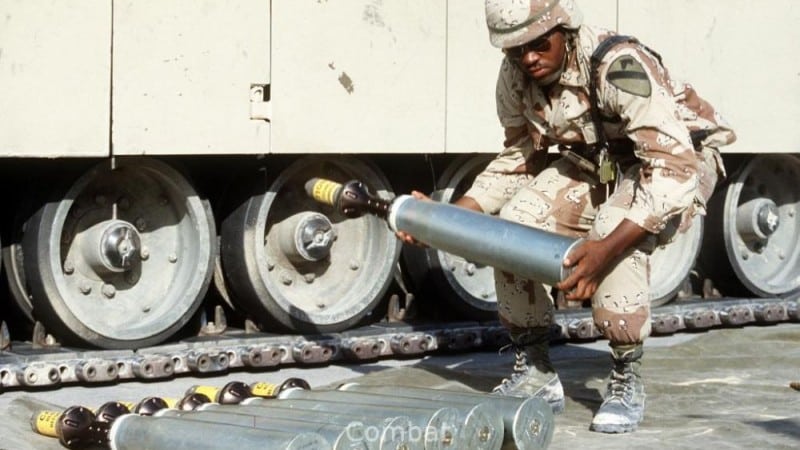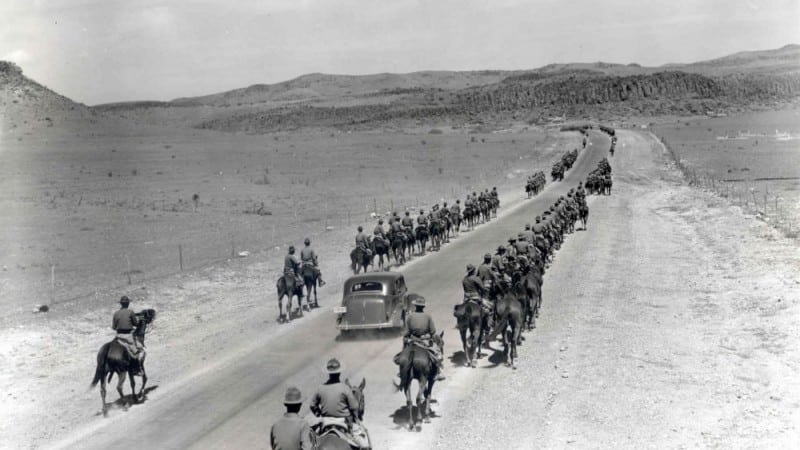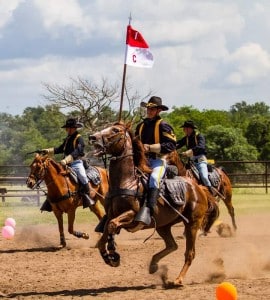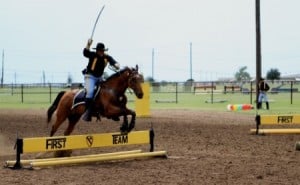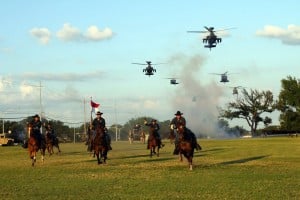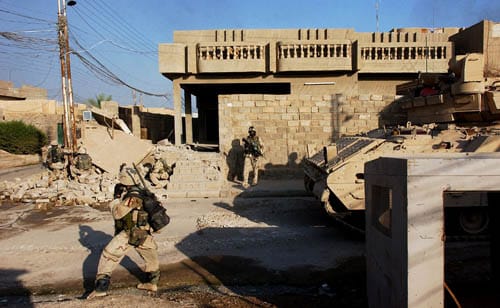Modern Day Cavalry
The present day Horse Cavalry Detachment of the 1st Cavalry Division, based at Fort Hood, Texas
The present-day Horse Cavalry Detachment of the 1st Cavalry Division, based at Fort Cavazos, Texas, was formed under the direction of MG James C. Smith (Commander May 1971 to September 1973) of the 1st Cavalry Division – a general noted both for his ability to build morale among his troops and a keen sense of public relations. The Horse Cavalry Detachment of the 1st Cavalry Division, one of seven mounted cavalry units on active duty in the United States Army, brings to life the spirit of the cavalry by its transformation into a unit from the proud heritage of the United States Cavalry.
The horse as a partner in war is no more. It has been over 70 years, February 1943, since the last mounted Troopers of the 1st Cavalry Division traded their horses for jeeps, trucks and tanks in preparation of their entrance into the Pacific Theater to fight the Japanese. The days of mounted troops and squadrons may be behind us, but the spirit and traditions of the old cavalry lives on in today’s modern 1st Cavalry Division at Fort Cavazos, Texas.
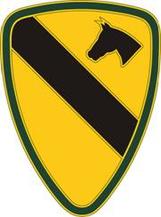
The Stables
The garrison, workshops and stables are located in a rural setting adjacent to the main entrance of Fort Cavazos. The detachment is organized and equipped to represent the division as an 1870 era “horse Soldier” troop, complete with cavalry uniforms consisting of government issue blouses, trousers, hats, belts and boots, authentic firearms, sabers, saddles and work details of the period. The standard weapons issued to the troops are the 1875 Model 45-70 Springfield “Trap Door” Carbine, the 1875 Colt Single Action, 45 Caliber Revolver and the 1860 Light Cavalry Saber which was considered as standard issue for the Civil War period. Saddles used on the horses are the McClellan 1885 Saddle, which has been modified with the 1904 quarterstrap.
The close order mounted drills are pattered as in the 1883 Manual of Cavalry Tactics. Even the horses chosen for platoon mounts are selected to the same physical standards imposed a century ago. Each horse must be no less than 15 hands high, and it must be dark, with a minimum of white markings. In addition to the horses and mules, the platoon has a Studebaker escort wagon, from the 1890s, which has been restored by members. The wagon was originally used to haul supplies, but it is now mostly used to give rides to children attending the horse platoon shows.
Detachment Operations
When not on post ceremonial or parade duty, the Troopers are assigned to carry out garrison duties somewhat similar to those of the era they represent. In addition to their normal military readiness training, Troopers assigned to the detachment groom, feed and care for their horses, maintain all the tack equipment and are trained in saddle restoration, boot making and horseshoeing. A major and not insignificant task in caring for the horses is the attention and individual care given to the horses’ hoofs. Approximately every 4 to 6 weeks, the iron horseshoes have to be replaced. Proper selection, utilization and fitting of horseshoes provides: protection and support for the hooves of the horses, correction of hoof conformation problems, prevention of irregular or uneven hoof wear, maintenance of proper form and balance of hoof, and improvement in the distribution of the horse’s weight across the hoof.
The detachment operates as a self sufficient unit, performing all of its specialized functional support. The leather shop is equipped with the hand tools and special machinery which is required to meet the needs of tack repair and remanufacture, saddle repair and restoration and boot repair and manufacture. Major use of the equipment is made during the late fall and winter months to ensure that all gear is in readiness for the spring and summer parade season. In addition to the personal gear that must be maintained by each Trooper, the small “motor pool” of special horse trailers which is used to transport the horses to remote locations and equipment trailers, is also maintained by the Troopers.
Mounted Demonstrations
Since its inception in 1972, the detachment has performed for all types of audiences, from children to Presidential Inaugural Parades, the 1984 World’s Fair, the 1996 Tournament of Roses Parade and literally thousands of state and local fairs, parades, and rodeos. The detachment performs formal military parades and reviews, civic and community street parades, and a 30-minute mounted drill and weapons demonstration.
The mounted demonstration is a thrilling exhibition of skill and precision required of the mounted Trooper. It includes drill maneuvers at the walk, trot, and gallop. The weapons portion of the show demonstrates the mounted use of the Cavalry Saber, Colt .45 caliber Revolver, and Springfield Carbine. The detachment is entirely self-contained with 40 Troopers and 47 horses, 8 mules, an M1878 supply wagon, and an M1841 light mountain howitzer cannon.
The detachment is flexible and can adjust performances and parades to create almost any effect and only requires an area the size of a football field for its performances. There is no charge for any appearance, but travel and lodging cost must be paid by the requesting organizations. Costs vary from location to location, depending upon the distance from Fort Cavazos, Texas.
